SEOUL, South Korea—Paper plates piled high with boiled pork adorn every table. The rowdy conversation of old friends fills the tiny house and floats out into the frigid grey, early winter afternoon. Women dressed in slacks and coats with synthetic fur-lined collars sit cross-legged on the floor chatting and joking. In the next room men in old-fashioned suits converse boisterously, punctuating the afternoon with bursts of jagged laughter.
All 105 residents of the village of Hapcheon gathered to eat and drink the afternoon away in celebration of a neighbor’s wedding. Gatherings like this have been held in Korean villages for centuries. It is a tradition for the bride’s family to hold a feast in their house for the whole village. Everyone, young and old, comes along to help the family celebrate. But despite the warm atmosphere in the room and the air of joviality, it’s obvious there is something missing from this celebration. There are very few young people.
“Eighty percent of the villagers in Hapcheon are over the age of 65. They love it here because they can farm and earn a bit of money,” said Jung Jungja, a schoolteacher who has elderly relatives in the village. “But if future generations are going to live here, the government will need to provide access to services such as schools and medical care.”
This generational imbalance is not unique to Hapcheon. It is similar to what is happening to all over South Korea in the cities and in the countryside. Over the past few decades South Korea has modernized and developed its economy at a blistering pace. As an essential part of that development, successive governments have encouraged families to have fewer children. South Korea now has one of the lowest birth rates in the world and one of the most rapidly aging populations.
At present, citizens aged 65 years and older make up 11 percent of the population. By 2026, they may account for 20 percent of the population. By the year 2016 the elderly are expected to outnumber children under the age of 14.
[etssp 184]A South Korean family once consisted of several generations living under the same roof. As they aged, parents would continue to live with their eldest son, his wife and children. It was the eldest son’s responsibility to provide financial support and care for the elderly couple. Now, most Korean families do not live in houses, but in small, modern apartments. The cost of living has risen, and the pace of life has increased.
It is clear that this situation makes many South Koreans uneasy. Korean society has always treated elders with great respect. A long, happy retirement surrounded by grandchildren was something that all Koreans looked forward to. The South Korean government announced in November that it would spend 75.8 trillion won (US $65 billion) over the next five years to combat the low birth rate and the aging population. This will include government funded maternity and paternity leave, and the introduction of a child-care allowance.
On a similar afternoon there was another gathering in a working-class suburb called Pannam. It was not a wedding celebration but a Sunday lunch in a public housing complex. The large dining room in the local community center was filled with a crowd of over 200 elderly patrons. Some chatted and laughed while others sat silently. Amid the din of crashing steel pans and the friendly shouts of co-workers, Shin Jae Hwan, an office worker who volunteers his time once a month, served lunch.
The diners at the community center were less fortunate than the residents of Hapcheon village. Many had physical disabilities; some were in wheelchairs while others walked stiffly and with difficulty. They were all residents of government-funded community housing in the form of tiny, one-room units in Soviet-style apartment blocks. They could no longer work, had no money, and no children to care for them; or children who simply couldn’t afford to care for them.
A local Christian organization provides lunch at the community center seven days a week. On weekdays the South Korean government funds the employment of kitchen staff to prepare the meals. On Saturdays and Sundays many ordinary South Koreans like Shin Jae Hwan volunteer to cook lunch. If they didn’t volunteer, many of the residents would go hungry.
“Obviously, we like to help other people,” said Shin. “But we feel that we gain from the experience of helping, and we can learn from these seniors. It’s very rewarding, and we sometimes feel very moved emotionally after finishing a day’s work.”
A study recently released by Seoul National University found that 1 out of every 10 elderly women in South Korea skips at least one meal a day. Emotional factors such as loneliness and depression are believed to be a major cause.
In the past Korean parents spent as much money as they could on their children’s education. The aim was to give them the best possible chance of academic and financial success. A family’s investment in its children was seen as an investment in the future. When children grew up they would repay their parents by providing for them in their retirement. Koreans didn’t generally save for retirement and never expected to receive an old age pension from their government.
Government-funded pensions for the elderly were only introduced in South Korea in 1988. Of the 2.5 million elderly Koreans who qualify to receive the pension, most receive less than 400,000 won (US$350) per month.
South Korea now has the highest rate of elderly poverty in the OECD (Organization for Economic Co-operation and Development). A study published by the Korean National Pension Research Institute in August found that over 35 percent of South Koreans over the age of 65 live in absolute poverty, which means that their income is not enough to cover the basic cost of living. And the situation is worsening; that figure has increased from 30 percent in 2006.
In the village of Hapcheon, as the wedding lunch drew to a close, the mostly grey-haired guests began to depart in ones and twos to continue with their regular chores. Yun Sun-Ja, a resident of the village in her 60s, strolled home through the tiny village with some of her friends and family. A heaping pile of cabbages awaited in her small yard, which with the help of her two daughters, she will begin converting into a year’s supply of kimchi (pickled cabbage).
“These pickles are for the families of my children and my two younger siblings. I produce healthy food for my whole family,” she says with a grin, “and that makes it fun.”
With lunch over in the community center in Pannam, the residents began to rise from their seats and quietly shuffle out. A handful stayed behind in small groups to chat and play cards. Some arrived alone, ate without speaking, and then quietly left.
Some volunteers put on their coats and go out to deliver meals. Each pulls a small trolley piled with meals, individually wrapped in plastic bags, which are for those residents too sick or disabled to come down to eat at the community center.
South Korean society is changing rapidly, and government policies are struggling to keep up with the pace of change. But it is clear that many ordinary Koreans are not prepared to give up on their long tradition of respect and care for the elderly. Choi Gumok is a cook who volunteers at the community center. Her husband works as a truck driver, and she has a son in his 20s who works as a mobile phone salesman. She stays behind to wash dishes while her husband and 7-year-old niece go out to deliver meals.
“I like to care for other people,” she sighs. “We cook with love, and we do it merrily. I really hope this food will bring happiness and good health to the people who eat it.”
All 105 residents of the village of Hapcheon gathered to eat and drink the afternoon away in celebration of a neighbor’s wedding. Gatherings like this have been held in Korean villages for centuries. It is a tradition for the bride’s family to hold a feast in their house for the whole village. Everyone, young and old, comes along to help the family celebrate. But despite the warm atmosphere in the room and the air of joviality, it’s obvious there is something missing from this celebration. There are very few young people.
“Eighty percent of the villagers in Hapcheon are over the age of 65. They love it here because they can farm and earn a bit of money,” said Jung Jungja, a schoolteacher who has elderly relatives in the village. “But if future generations are going to live here, the government will need to provide access to services such as schools and medical care.”
This generational imbalance is not unique to Hapcheon. It is similar to what is happening to all over South Korea in the cities and in the countryside. Over the past few decades South Korea has modernized and developed its economy at a blistering pace. As an essential part of that development, successive governments have encouraged families to have fewer children. South Korea now has one of the lowest birth rates in the world and one of the most rapidly aging populations.
At present, citizens aged 65 years and older make up 11 percent of the population. By 2026, they may account for 20 percent of the population. By the year 2016 the elderly are expected to outnumber children under the age of 14.
[etssp 184]A South Korean family once consisted of several generations living under the same roof. As they aged, parents would continue to live with their eldest son, his wife and children. It was the eldest son’s responsibility to provide financial support and care for the elderly couple. Now, most Korean families do not live in houses, but in small, modern apartments. The cost of living has risen, and the pace of life has increased.
It is clear that this situation makes many South Koreans uneasy. Korean society has always treated elders with great respect. A long, happy retirement surrounded by grandchildren was something that all Koreans looked forward to. The South Korean government announced in November that it would spend 75.8 trillion won (US $65 billion) over the next five years to combat the low birth rate and the aging population. This will include government funded maternity and paternity leave, and the introduction of a child-care allowance.
On a similar afternoon there was another gathering in a working-class suburb called Pannam. It was not a wedding celebration but a Sunday lunch in a public housing complex. The large dining room in the local community center was filled with a crowd of over 200 elderly patrons. Some chatted and laughed while others sat silently. Amid the din of crashing steel pans and the friendly shouts of co-workers, Shin Jae Hwan, an office worker who volunteers his time once a month, served lunch.
The diners at the community center were less fortunate than the residents of Hapcheon village. Many had physical disabilities; some were in wheelchairs while others walked stiffly and with difficulty. They were all residents of government-funded community housing in the form of tiny, one-room units in Soviet-style apartment blocks. They could no longer work, had no money, and no children to care for them; or children who simply couldn’t afford to care for them.
A local Christian organization provides lunch at the community center seven days a week. On weekdays the South Korean government funds the employment of kitchen staff to prepare the meals. On Saturdays and Sundays many ordinary South Koreans like Shin Jae Hwan volunteer to cook lunch. If they didn’t volunteer, many of the residents would go hungry.
“Obviously, we like to help other people,” said Shin. “But we feel that we gain from the experience of helping, and we can learn from these seniors. It’s very rewarding, and we sometimes feel very moved emotionally after finishing a day’s work.”
A study recently released by Seoul National University found that 1 out of every 10 elderly women in South Korea skips at least one meal a day. Emotional factors such as loneliness and depression are believed to be a major cause.
In the past Korean parents spent as much money as they could on their children’s education. The aim was to give them the best possible chance of academic and financial success. A family’s investment in its children was seen as an investment in the future. When children grew up they would repay their parents by providing for them in their retirement. Koreans didn’t generally save for retirement and never expected to receive an old age pension from their government.
Government-funded pensions for the elderly were only introduced in South Korea in 1988. Of the 2.5 million elderly Koreans who qualify to receive the pension, most receive less than 400,000 won (US$350) per month.
South Korea now has the highest rate of elderly poverty in the OECD (Organization for Economic Co-operation and Development). A study published by the Korean National Pension Research Institute in August found that over 35 percent of South Koreans over the age of 65 live in absolute poverty, which means that their income is not enough to cover the basic cost of living. And the situation is worsening; that figure has increased from 30 percent in 2006.
In the village of Hapcheon, as the wedding lunch drew to a close, the mostly grey-haired guests began to depart in ones and twos to continue with their regular chores. Yun Sun-Ja, a resident of the village in her 60s, strolled home through the tiny village with some of her friends and family. A heaping pile of cabbages awaited in her small yard, which with the help of her two daughters, she will begin converting into a year’s supply of kimchi (pickled cabbage).
“These pickles are for the families of my children and my two younger siblings. I produce healthy food for my whole family,” she says with a grin, “and that makes it fun.”
With lunch over in the community center in Pannam, the residents began to rise from their seats and quietly shuffle out. A handful stayed behind in small groups to chat and play cards. Some arrived alone, ate without speaking, and then quietly left.
Some volunteers put on their coats and go out to deliver meals. Each pulls a small trolley piled with meals, individually wrapped in plastic bags, which are for those residents too sick or disabled to come down to eat at the community center.
South Korean society is changing rapidly, and government policies are struggling to keep up with the pace of change. But it is clear that many ordinary Koreans are not prepared to give up on their long tradition of respect and care for the elderly. Choi Gumok is a cook who volunteers at the community center. Her husband works as a truck driver, and she has a son in his 20s who works as a mobile phone salesman. She stays behind to wash dishes while her husband and 7-year-old niece go out to deliver meals.
“I like to care for other people,” she sighs. “We cook with love, and we do it merrily. I really hope this food will bring happiness and good health to the people who eat it.”
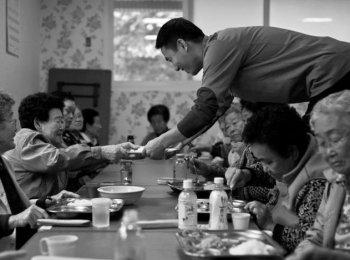
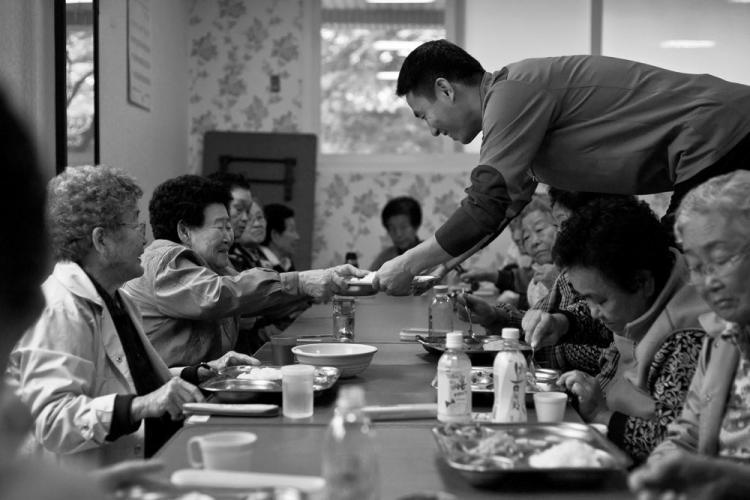
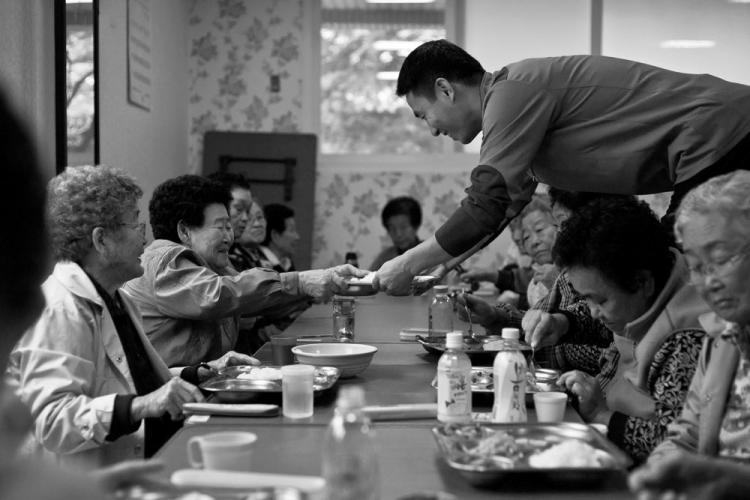
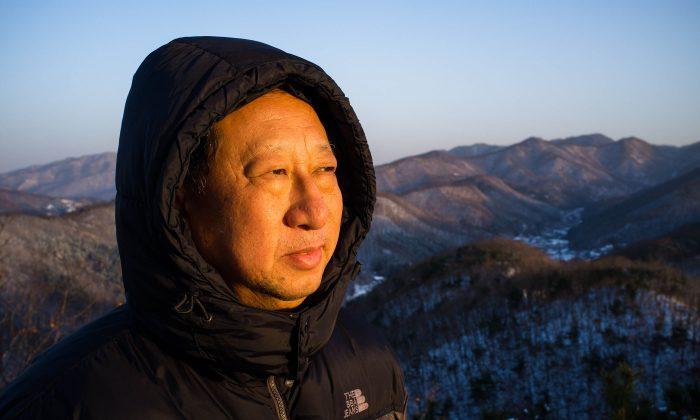
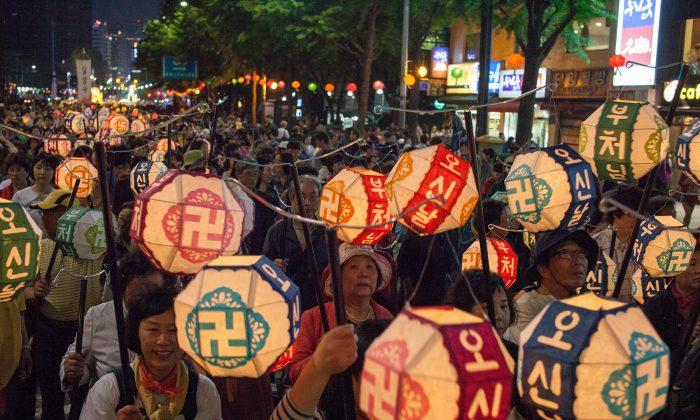
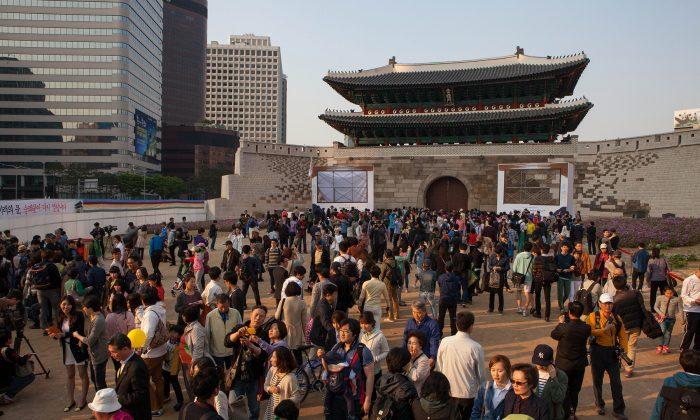
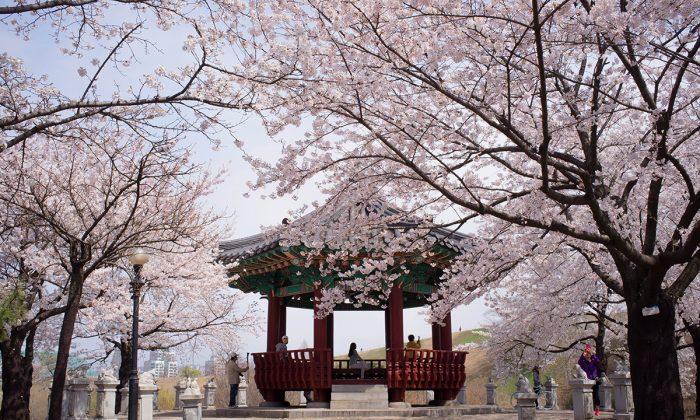
Friends Read Free